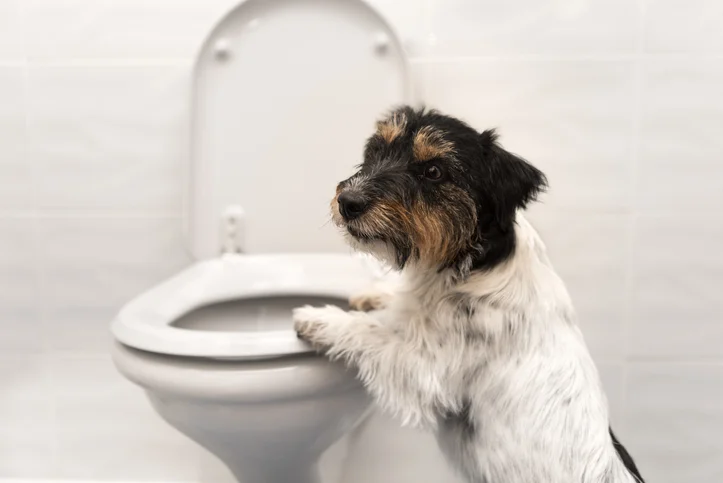Are you searching for selective information about 4 Reasons Why Dog Poop Cleanup is Important?

When it involves throwing away waste, particularly animal waste, many people usually turn to the hassle-free alternative of flushing it down the bathroom. However, this seemingly easy solution can have serious repercussions for the environment and public health. In this article, we'll discover why flushing pet waste down the toilet is a poor concept and offer alternate methods for appropriate disposal.
Introduction
Correct garbage disposal is vital for keeping ecological sustainability and public health. While it might seem harmless to purge animal waste down the bathroom, it can bring about various problems, both for the atmosphere and human wellness.
Threats of flushing pet waste
Environmental impact
Flushing pet waste presents hazardous bacteria and microorganisms into waterways, which can negatively affect water environments. These pathogens can pollute water resources and damage marine life, interfering with fragile ecosystems.
Public health issues
Animal waste contains hazardous bacteria such as E. coli and Salmonella, which can pose severe health and wellness risks to humans. Purging animal waste down the toilet can infect water products, causing the spread of illness and infections.
Alternatives to flushing
Instead of purging pet waste down the toilet, there are numerous alternate disposal methods that are more eco-friendly and hygienic.
Composting
Composting pet waste is a green method to deal with it. By composting, raw material is broken down right into nutrient-rich dirt, which can be utilized to fertilize yards and plants.
Landfill disposal
Dealing with animal waste in a landfill is one more option. While not as eco-friendly as composting, it is a safer option to flushing, as it prevents the contamination of water resources.
Pet waste disposal systems
There are specialized family pet waste disposal systems available that securely and hygienically take care of pet waste. These systems often use enzymes to break down waste and eliminate odors.
Actions to proper animal waste disposal
To make sure appropriate disposal of animal waste, follow these actions:
Scooping and getting waste
Regularly scoop and bag animal waste utilizing naturally degradable bags. This prevents waste from infecting the environment.
Utilizing marked waste bins
Dispose of bagged animal waste in marked waste containers, such as garden compost bins or land fill bins. Prevent flushing it down the bathroom in any way expenses.
Cleansing litter boxes and pet dog locations regularly
Frequently tidy can and family pet locations to stop the build-up of waste and bacteria. Use pet-safe cleaning products to maintain hygiene.
Benefits of proper disposal techniques
Taking on correct disposal methods for pet waste offers several advantages:
Reduced environmental pollution
Correct disposal techniques lower the risk of environmental pollution, protecting waterways and environments from contamination
Minimized threat of water contamination.
By staying clear of flushing pet waste down the bathroom, the danger of water contamination is considerably lowered, securing public health.
Boosted hygiene and health
Proper disposal methods advertise far better hygiene and hygiene, producing a safer environment for both humans and pets.
Conclusion
To conclude, flushing pet waste down the bathroom is harmful to the atmosphere and public health. By embracing different disposal methods and complying with proper waste administration practices, we can minimize the adverse impact of animal waste and add to a cleaner, much healthier world.
Can You Flush Dog and Cat Poo Down the Toilet?
Cat poo often contains a highly resistant parasite called Toxoplasma that can infect people and animals. Many municipal water treatments do not have equipment or processes to kill it (as they're designed for humans who don't poop this parasite!) meaning it would pass into our waterways, posing a risk to humans and animals alike. It can even prove fatal for some wildlife.
Many studies have shown that so called biodegradable and 'flushable' products, including flushable poo bags, don't actually disintegrate as claimed. This is primarily because they're designed to biodegrade in warm water, not cold water, like that in our toilets. In fact, 'flushable' poo bags have historically caused $8 million in blockages in Australia so it's not recommended to try flushing these bags, despite what they claim! The same goes for cat litter. Our old sewage systems are only designed for the 3 P's - Pee, Poo and Paper and can easily get blocked if anything else is thrown in.
So what about dog poo (without the bags)?
Again, dog poo is considerably different to human poo. It contains twice the harmful bacteria and viruses and also contains unique parasites. One particular parasite, Toxocara, is highly resistant to high temperatures. Our water treatment facilities are not designed to deal with dog poo pathogens such as this so there's a chance that they will pass through and contaminate our waterways if flushed down the toilet. Toxocara can also infect humans, causing blindness in children and infect animals so presents a public health risk. This is why many waste water treatment plants advise against flushing any type of pet poo down the toilet, due to the extra pathogens it contains.
Dog and cat poo can also contain medicines, such as parasite treatments, which can be highly toxic to aquatic life and may threaten the stability of entire ecosystems. Medicines are much trickier to clean from sewage and will likely pass unchanged into our waterways.
Scalability
There's also the question of whether flushing pet waste could really ever be a viable widespread solution. Could our old sewage systems really cope with the additional faeces of 12 million dogs and 10 million cats if everyone starting flushing their pet's poo? It's unlikely!
We contacted Wessex Water and South West Water on the matter of flushing pet poo and both gave different answers. The former advised it was safe to do so, while the latter strongly advised against it! This may be due to their different treatment processes which can vary depending on location. However both water companies agreed that you should never flush any 'flushable' products down the toilet, even if they claim to be safe to flush as in real world this just simply isn't the case and they often cause costly blockages. They emphasised that only the three P's - Poo, Paper and Pee should ever be flushed down the toilet.
Conclusion
In summary, never flush biodegradable or 'flushable' poo bags or cat litter down the toilet. We also feel it's safer to avoid flushing cat and dog faeces, due to it's pathogenic content, the unknown risks of parasite treatments and medicines on wildlife and the wider environment and due to the inconsistent advice. Dog poo may be disposed in a well managed compost or wormery, rather than down the toilet. If you are still really keen to flush pet poo, make sure you speak to your local water treatment plant before you do so, as they may or may not have the treatments to safely process it.
If you dispose of your pet's waste in general waste then ensure to do so in the most eco-friendly way by using recycled poo bags such as Award Winning ReSEAcled poo bags. Experts advice it's better to re-use waste that was already destined for landfill or incineration rather than using poo bags made form virgin materials because this helps reduce plastic production, reduce plastic pollution and cuts carbon emissions and energy use. ReSEAcled poo bags are also the world's first Plastic Negative poo bags, removing 5 times as much plastic from the environment than they use! Click here to learn more.
https://petimpact.co.uk/blogs/poo-revolution/can-you-flush-pet-poo-down-the-toilet

Do you enjoy more info about 4 Reasons Why Dog Poop Cleanup is Important? Post a remark down the page. We would be delighted to hear your feelings about this write up. We hope that you visit us again in the near future. For those who liked our blog post if you please don't forget to share it. We cherish your readership.
Schedule